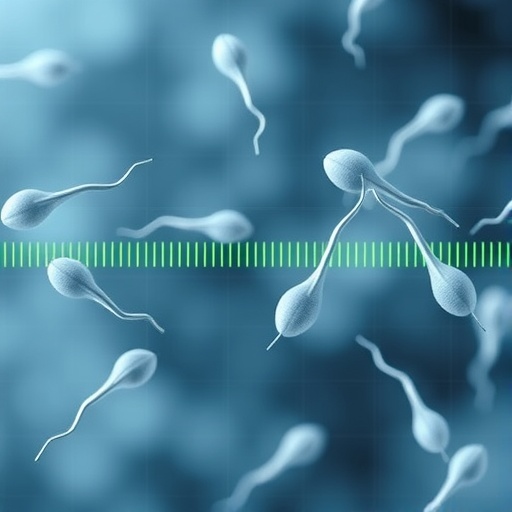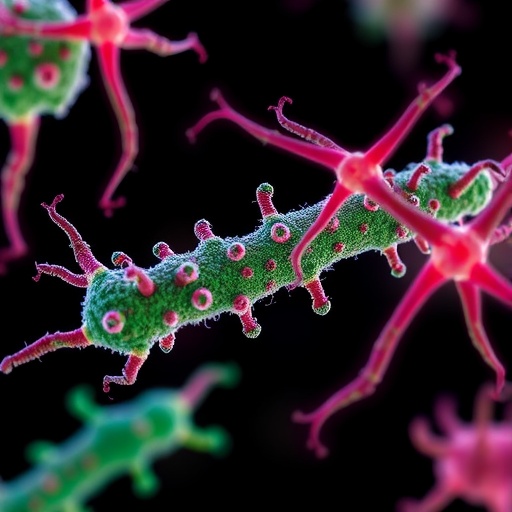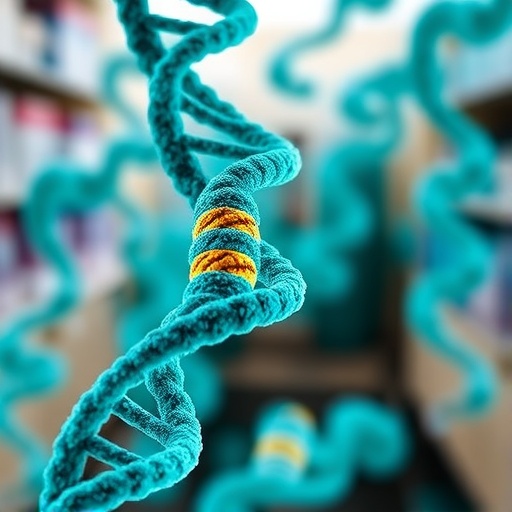PROTECT YOUR DNA WITH QUANTUM TECHNOLOGY
Orgo-Life the new way to the future Advertising by AdpathwayOn islands across the globe, the intricate relationship between plants and animal seed dispersers is a fundamental driver of ecosystem dynamics and biodiversity. Many island plants depend heavily on native vertebrate species such as birds, bats, and reptiles to disperse their seeds, ensuring successful reproduction and colonization of new habitats. However, the extinction of native frugivores has long been recognized as a critical factor diminishing seed dispersal effectiveness. Yet, groundbreaking new research published in the Proceedings of the National Academy of Sciences on October 7, 2025, reveals a more profound shift—one where the introduction of non-native invasive animal species exerts an even greater impact on seed dispersal than the mere loss of native species.
This expansive study used extensive data gathered from 120 islands spanning 22 archipelagos, analyzing the dynamics of seed dispersal networks disrupted by native species extinctions and invasive introductions. The research meticulously examined three vertebrate frugivore categories: extant native species, extinct native species, and introduced non-native species. Their comprehensive statistical analyses uncover a troubling paradigm where invasive omnivorous mammals, such as feral pigs and rats, have become prevalent replacements for native specialist frugivores like birds, bats, and tortoises, fundamentally reshaping seed dispersal potential.
The mechanistic underpinnings of these disruptions are rooted in physiological dissimilarities between native and invasive species, particularly in gape size—the width of the animal’s bill or mouth—critical in determining the size and type of seeds dispersed. Many invasives have gape sizes mismatched to native seed morphology, impairing their ability to transport seeds efficiently. In some cases, these invasive mammals even consume seeds destructively rather than dispersing them intact, severing the regenerative link essential for plant recruitment and population maintenance. This biotic trait mismatch forecasts a decline in effective seed dispersal and threatens the long-term survival trajectory of many island endemic plants.
Perhaps even more remarkable is the scale of the non-native occupants’ foothold. The study’s data reveal that introduced species outnumber extinct natives by a factor of nearly two in species composition—averaging 44% introduced species versus 23% extinct. Furthermore, invasive introductions impact a greater proportion of islands within archipelagos—92% of islands harbor invasive frugivores compared to 76% experiencing native extinctions. This suggests that anthropogenic factors, including both accidental and intentional species introductions, are driving a qualitative and quantitative transformation of seed dispersal communities on an unprecedented global scale.
The ecological consequences of this shift are especially dire in Hawaiʻi, where native forests once flourished under the stewardship of endemic birds responsible for reliably dispersing seeds of culturally and ecologically vital plants such as lama (Diospyros sandwicensis), hōʻawa (Pittosporum flocculosum), and olopua (Nestegis sandwicensis). The replacement of these specialized avian dispersers by generalist, non-native mammals has led to a slowdown or complete halting of native forest regeneration in some areas. This disruption does not only threaten biodiversity but also imperils watershed functions critical to water security and undermines cultural traditions deeply intertwined with native flora.
From a conservation biology perspective, the findings signal an urgent need to rethink current management paradigms. Control and eradication of invasive mammals must become a top priority to protect remaining native frugivores and restore the integrity of seed dispersal networks. The study highlights how the presence of invasive omnivores leads to both quantitative and qualitative losses in seed dispersal services, exacerbating the vulnerability of island plant communities already weakened by native species extinctions. Effective conservation strategies must incorporate ecological trait matching to identify suitable seed dispersers for restoration efforts that aim to rebuild mutualistic interactions.
Donald Drake, professor at the University of Hawaiʻi at Mānoa School of Life Sciences and interim director of the Lyon Arboretum, emphasized the significance of these findings for island ecosystems globally: “Our analyses demonstrate that introduced species are not merely filling ecological vacancies left by extinct natives but are reshaping community dynamics in ways that undermine native plant recruitment. This insight compels us to prioritize invasive species control and native frugivore protection as integral components of ecosystem restoration.”
The implications of these patterns extend far beyond islands, offering critical lessons for ecological interactions worldwide. The disruption and replacement of seed dispersers alter community assembly processes and influence evolutionary trajectories. The capacity of invasive species to influence ecosystem functions highlights the complex and cascading effects of human-mediated biotic exchanges—a phenomenon that demands global attention.
In practical terms, island conservationists are urged to invest in monitoring frugivore populations, assessing gape size and dietary preferences to better understand seed dispersal efficacy, and employing innovative tools such as exclosure experiments and molecular seed tracking to quantify dispersal shifts. Integrating such approaches can reveal nuanced understandings of how invasive species modify plant regeneration landscapes and inform adaptive management interventions.
Moreover, the cultural importance of native plant species, especially in places like Hawaiʻi, underscores the intersection between ecological resilience and cultural heritage preservation. Plants that are integral to traditional practices are at risk if seed dispersal continues to decline, serving as a poignant reminder that biological conservation is also cultural conservation.
The study’s global scope, covering diverse island systems, bridges gaps in previous research that often focused only on isolated islands or specific species. By synthesizing data across multiple archipelagos, this research paints a comprehensive picture of changing island frugivore communities and their cascading impacts on plant reproduction, offering robust evidence of a worldwide phenomenon.
In conclusion, the study elucidates that species introductions impose a seismic shift in seed dispersal potential, surpassing the effects of native species extinctions. This unprecedented insight compels conservationists, ecologists, and policymakers to recognize the dual threats invasive species pose—not just through competition and predation but by fundamentally altering mutualistic relationships key to ecosystem function. Urgent, multifaceted interventions are essential to protect island biodiversity, secure ecosystem services, and sustain the cultural values tied to native flora.
Subject of Research: Not applicable
Article Title: Species introductions shift seed dispersal potential more than extinctions across 120 island plant–frugivore communities
News Publication Date: 7-Oct-2025
Web References: https://doi.org/10.1073/pnas.2423438122
Image Credits: Credit: UH
Keywords: Plant sciences, Life sciences, Animals, Animal science
Tags: biodiversity on islandsconservation of island floraecological consequences of invasivesfrugivore replacement effectsimpact of invasive speciesinvasive mammals and seed dispersalisland ecosystem dynamicsisland plant reproductionnative frugivore extinctionnon-native animal introductionsseed dispersal networksvertebrate seed dispersers


 2 hours ago
7
2 hours ago
7





















 English (US) ·
English (US) ·  French (CA) ·
French (CA) ·